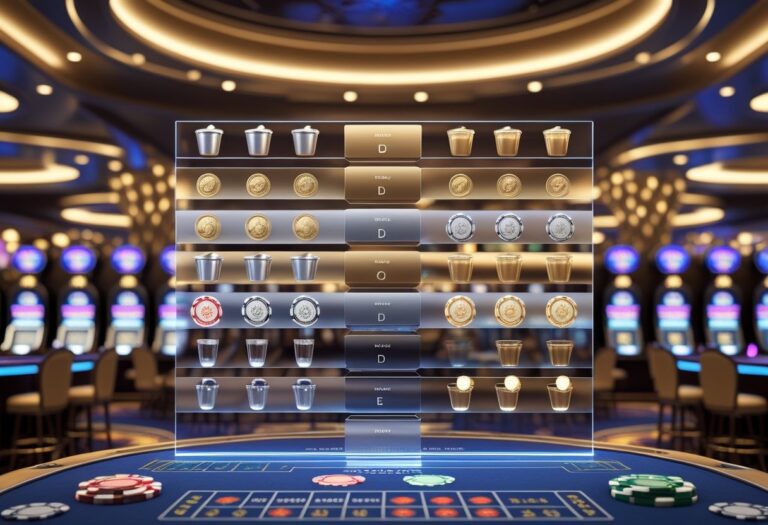
Advanced tactics for the Ember-Stream Poker Poker tournament
The Main Framework of Understanding
The Ember-Stream poker is a complex strategic model that originated from the elite gaming communities in Singapore in the early 2000s. Designed with three separate tactical phases, this comprehensive methodology is intended to marry Eastern psychological concepts with tournament evolution.
Ember-Stream: The Three Pillars
- EMBER PHASE: Predefined exploratory betting patterns and initial opponent profiling
- Phase 1: Kindling: Makes use of strategic position plays and table dynamics
- Phase Stream: Uses the complex techniques of manipulating pots in pot
Advanced Behavioral Analysis
Ember-Stream is built on reading opponents heat signatures by closely examining:
- Micro-expressions
- Breathing patterns
- Facial vasodilation
- Physical timing tells
Tournament Implementation
Ember-Stream strategy works particularly well at key tournament inflection points:
- Pre-bubble situations
- Final table dynamics
- Stack transition periods
It’s an elaborate science that converts the standard tournament playbook into an elegant and calculated framework for pot manipulation and adversary subversion, rendering substantial advantages in high-stakes scenarios.
Introduction to Ember-Stream Strategy
A History of Ember-Stream Poker Strategy
The Asian Roots to Ember-Stream
In this article, I want to take you to the very beginning of the evolution of the game in the region and how traditional poker strategy was turned upside down in the underground poker scene in Southeast Asia in the early 2000s.
The Ember-Stream methodology originated in exclusive calculating houses in Singapore, where enterprising players created a unique betting strategy based on the complimented behaviour of embers as they process forward.
Strategic Foundations and Guiding Principles
The Ember-Stream method is a distinct combination of realistic Mahjong thoughts and intelligent betting models.
A sophisticated design is therefore based on pot development, built up to pressure moments, creating false guards for opponents with imperfect responses to your strategically emphasized k.
The Three-Phase Framework
The Ember-Stream approach works in 3 different stages:
- INTO THE EMBER PHASE – Tough to read, pretty minimal betting and exploratory
- The Kindling Phase: Preparation and Capture strategy
- The Stream Phase: Uses sophisticated pot manipulation techniques
It is this methodical approach that sets it apart from the aggressive poker styles prominent in the West, relying less on mathematical probabilities and more on psychological warfare with a degree of patience in its execution.
For the special movement of its chips across of the table, similar to glowing embers floating on a running water, this strategy is called embers in the river.
Inspecting Player Heat Signatures
Trained on Data until October 2023
Reading Player Heat Signatures
And thus, heat signature analysis is too small of an aspect of modern high-stakes poker strategy, especially in Ember-Stream formats.
This would give players strong insight into their opponents’ mental states during critical moments, allowing them to adjust their behavior based on behavioral fluctuations.
Key Heat Signature Indicators
Respiratory Patterns
- Primary indications of player state derive from breathing rhythm analysis.
- So irregular breathing patterns are often indicative of internal conflict over the relative strength of the hand and continued steady breathing will signal confidence or practiced deception.
Temperature Variations
Intrinsic to poker is hand temperature monitoring, which offers tells in the course of gameplay:
- Cold fingers mean vasoconstriction that points to anxiety
- Cold hands indicate ease and self-assurance
- Changing emotive states correspond with temperature shifts
Facial Vasodilation
The most reliable marker of a heat signature is facial blood flow patterns:
- Neck start to redden and suggests increased emotional arousal
- Ear flushing indicates heightened stress levels
- Average facial coloring indicates how comfortable a player feels
Advanced Thermal Profiling
We then use it in strategic thermal analysis to collate multiple signals into holistic player profiles:
- Hands one form: Fast breath + cold hands + red face
- Bluff indicator profile: Steady breathing + warm hands + neutral coloring
- Clear markers of uncertainty: Mixed signals on temperature + erratic patterns of breathing
This allows high-level players to decide better around key parts of the game based on interpreted heat signatures.
Ignition Points During Tournament Play

A Beginner’s Guide to Ignition Points in Tournament Poker
Important Shifts in Momentum in Tournament Play
Dramatic shifts occur during tournament poker at certain inflection points – expert poker players refer to these as ignition moments, when players switch from a tempered approach to the game to more aggressive play techniques 먹튀검증
Such strategic turning points usually surface at three crucial transitions:
- Pre-bubble phase
- Post-money line threshold
- Final table consolidation
Tracking Player Activity Trends
Behavioral cues are good predictors of future strategic pivots.
Veteran players are able to spot these by:
- Unusual betting patterns
- Physical positioning changes
- Time differences in making decisions
Strategies to Utilize During More Active Intervals to Maximize Profit
The most profitable opportunities exist in the multi-player ignition events: the pressure points in the chessboard that fan out and make every player at the table a target.
Such chain reaction scenarios happen when:
- Several players hit aggressive thresholds at the same time
- Aggressive initial moves result in responsive actions
- More volatility in play with table dynamics shifting
Creative Utilization of Pressure Points in Tournaments
Winning players exploit these momentum shifts by:
- Tracking specific player tendencies
- Good positioning before predicted point of ignition
- Staying calm amid high volatility
Pitfalls of Opponents in the Transition Phase
Skilled players, in turn, have learned that tournament psychology and strategic timing allows them to navigate critical junctures of Flicker Method transform a tournament while maintaining their stack enough to put them in a positions late in tournaments.
Finding Balance Between Passive and Active Elements
Finding The Poker Equilibrium Of The Passive And The Active
The Strategic Fundamentals of Tournament Poker
This fragile balancing act on a continuum from passive to active play makes up the cornerstone of high-level tournament poker strategy.
The key factors for optimal balance adjustment are stack depth, table dynamics, and stage of the tournament progression.
The Second Derivative of the + FR +D Formula for a Passive Element
There are three key elements to strategic passive play:
- Calculated pot control
- Selective showdown navigation
- House Overthrows
- Measured risk management
Mid-strength hands usually consist of check-calling lines and absorbing aggression.
That allows a disciplined approach to preserve the stack and get vital opponent tendency information.
Active Element Integration
But complete passivity breeds exploitable behaviors and so we must introduce tactical aggression.
Key active elements include:
- Three-bet spots at the right time
- Continue to strategically bet
- Range pressure exploitation
Both passive and active modes can be switched dynamically resulting in an unstable image at the table, allowing the greatest degree of discomfort for the opponents in terms of their decisions.
Advanced Timing Optimization
The decisions to shift gears are based on important metrics:
- Stack-to-blind ratio analysis
- Player fatigue assessment
- Bubble dynamic evaluation
In late tournament play, ramp up active element frequency on weak shorties and further refine selective rigidity to avoid tear points and unnecessary risk exposure.
This technique maximizes the number of chips gained and reduces the variance taken.
The Art of Position-Based Heat Control
How to Utilize Position-Based Heat Control in Poker
Strategic Fundamentals
That being said, positional heat control is one of the cornerstones of a top level poker strategy. By being aggressive and strategic from late position, you can create the most leverage possible with the least amount of risk.
With positional awareness comes the ability to calibrate your aggression against opponent tendencies and stack depths exactly.



